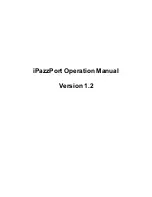
50
An EyeLink Portable Duo Tutorial: Running an Experiment
©
2016-2017 SR Research Ltd.
image is clear. The best focus will minimize the size of the corneal reflection
circle (colored turquoise). Please do not over-adjust the focus. It may only
require 1 or 2 millimetres of motion to reach the correct focus position.
The experimenter can easily tell if the pupil has been detected because the
image on the Host PC will have a crosshair drawn indicating its center. A green
ellipse, updated each refresh, is drawn in the zoomed view based on the
elliptical pupil-fitting algorithm (see section 3.6 “Pupil Tracking Algorithm”). A
properly thresholded pupil should be solidly blue, with minimal blue elsewhere
in the image. If the threshold is too low, the blue area will be smaller than the
pupil, and the eye image will show excessive movement. If the threshold is too
high, there will be shadows at the edges and corners of the eye, especially when
the eye is rotated. If a shadow interferes with pupil detection, or if the eye image
is severely under-thresholded, the crosshair and ellipse fitting will disappear
and the pupil will be lost. On the Host PC, an error message “PUPIL MISSING”
will appear in the zoomed eye image. Therefore, it is important that the
experimenter have the participant look at the four corners of the monitor, and
watch for potential pupil thresholding problems. One common problem is for
shadows at the corners of the eye, which can disrupt tracking of the pupil.
Threshold too low
Properly thresholded
Threshold too high
Figure 3-6: Pupil and CR Thresholds and Bias Values
The pupil threshold value is displayed under the zoomed eye image. Unlike the
Head-Stabilized tracking mode of the eye tracker, the threshold values are
automatically updated in the Remote Mode. Nevertheless, users
can still adjust
the bias of pupil thresholding – the extent to which the pupil threshold is
modulated – by clicking on the pupil threshold adjustment buttons or with the
UP and DOWN keys. Raising the bias increases pupil coverage (i.e., increasing
the blue area) while lowering the bias decreases the pupil coverage (i.e.,
decreasing the blue area). Pressing the AUTO button resets the pupil threshold
bias.
















































